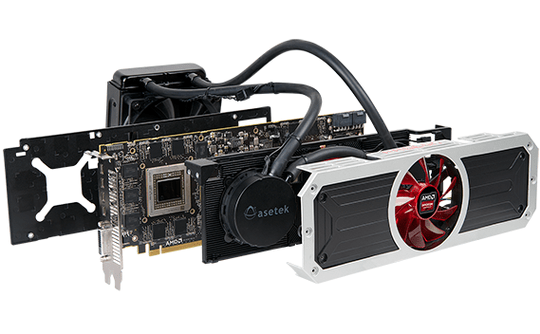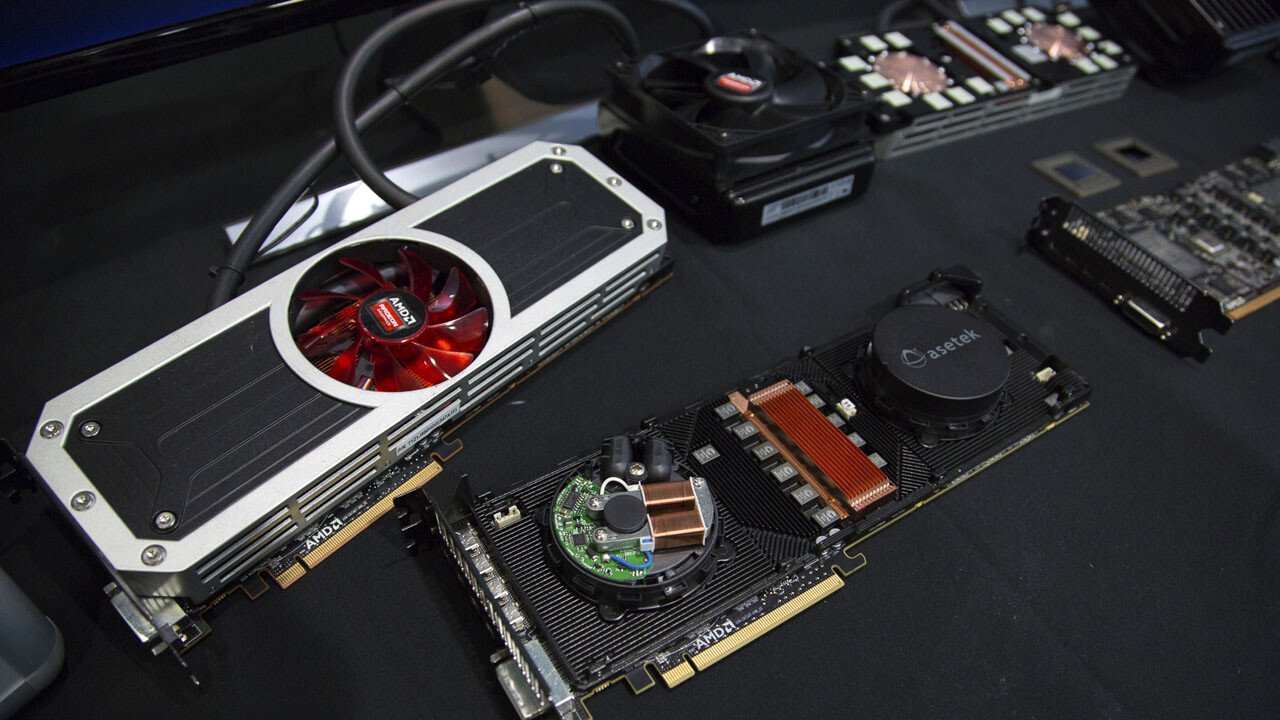Video Cards are what power all modern games. To create the best resolution that serious gamers demand, they need a graphics card of sufficient power.
AMD have built such a card, the R9-295X2, which allows for multiple 4K displays to be working together at peak visual fidelity. We got some time to sit down with the product Manager for this project, Victor Camardo, and had some time to discuss what makes this graphics card so special.
Comics Gaming Magazine: So I heard you worked on the big, bad boy of the graphics card world right now.
Victor Camardo: Yeah, the Radeon R9-295X2. That was one of our most amazing projects to work on. Internally, it was known as Project Hydra, which was the code name we gave the liquid cooler, which I think surprised everyone in the industry. Not anyone was expecting a liquid cooler from a main distributor. As you see, we have ExtravaLANza going on today and a lot of people have water-cooling in their systems, but it’s all done after market. What we wanted to do was bring a closed loop, maintenance free liquid cooling solution into the mainstream, but also allow you to maintain your warranty so you could pull it out of the box, put it in especially for a high graphics card.
CGM: What does this graphics card allow the game to do?
VC: 4K. this is the card for 4K. This is the only card on the market right now that’s actually going to be able to run 3×1 4K at any sort of reasonable frame rate.
CGM: What makes this card better than the competition?
VC: It’s completely uncompromised; we didn’t put any limitations on it whatsoever. We basically said, “Let’s take the best card we have with an AMD,” which is an R90x. We raised the clocks on it, we put two cards into a single form factor, we water-cooled it, and it’s faster than a bat outta hell. It’s just completely over the top, with no rules.

CGM: How much time did it take to go into development, and were there any challenges that you faced when you were in development of the card?
VC: Start to finish it was about a year in development. Challenges? Everything. Just to put it into perspective, this card has full-configured five 12bit memory interfaces, so that means on this PCB that’s 12 inches long, there’s a thousand and twenty four memory traces, and that’s just memory alone. Then you have power circuitry, display circuitry, this card supports up to five displays out of the box all at once. Space wise that is a huge challenge. You figure our 290X card is about 10 and a half inches, so put two of those on a twelve-inch card and it’s a huge engineering achievement.
Then we also have the water-cooling. We fit everything into a single card and it’s all a close loop in a 120 by 120 millimeter radiator. A lot of the press were skeptical when we came out with this. Saying it’s not going to cool, and then they actually tried it and said: wow, this thing actually works.
CGM: If you’re not planning on running 4K, what does the average gamer get out of this card if they run a single monitor set up and they just want the best gaming experience possible? Do they need this card?
VC: We didn’t intend this card to be for the average gamer. This is for the top of the top enthusiasts. If you want to get 400 frames per second in a single card, then by all means, but this card is really meant for gamers who want to take advantage of all this new panel technology coming out.
CGM: Are you worried that NVidia is going to try and match this card?
VC: I think they tried to match it, and they can keep trying. I think that this card is going to be undisputed for some time.




